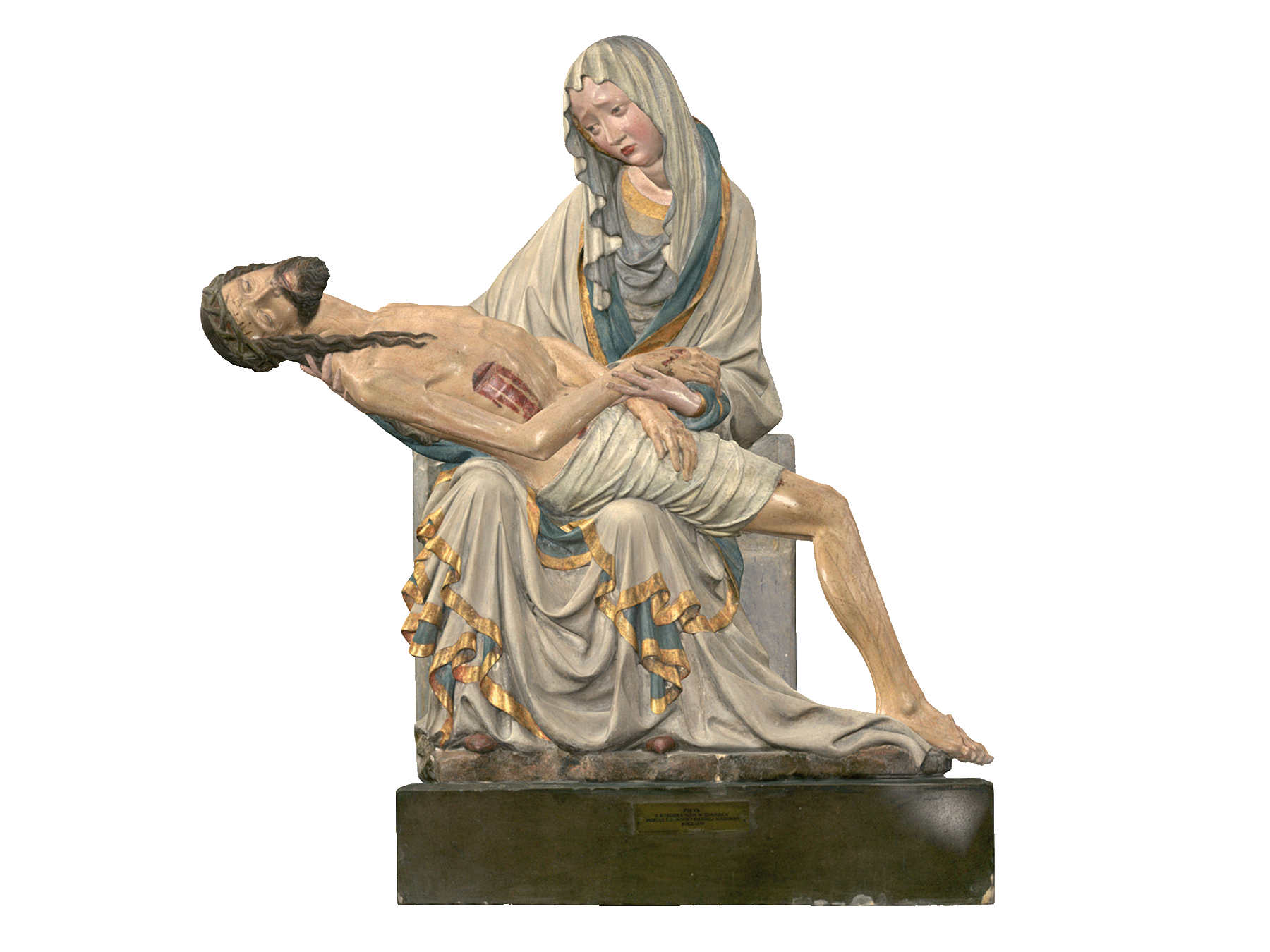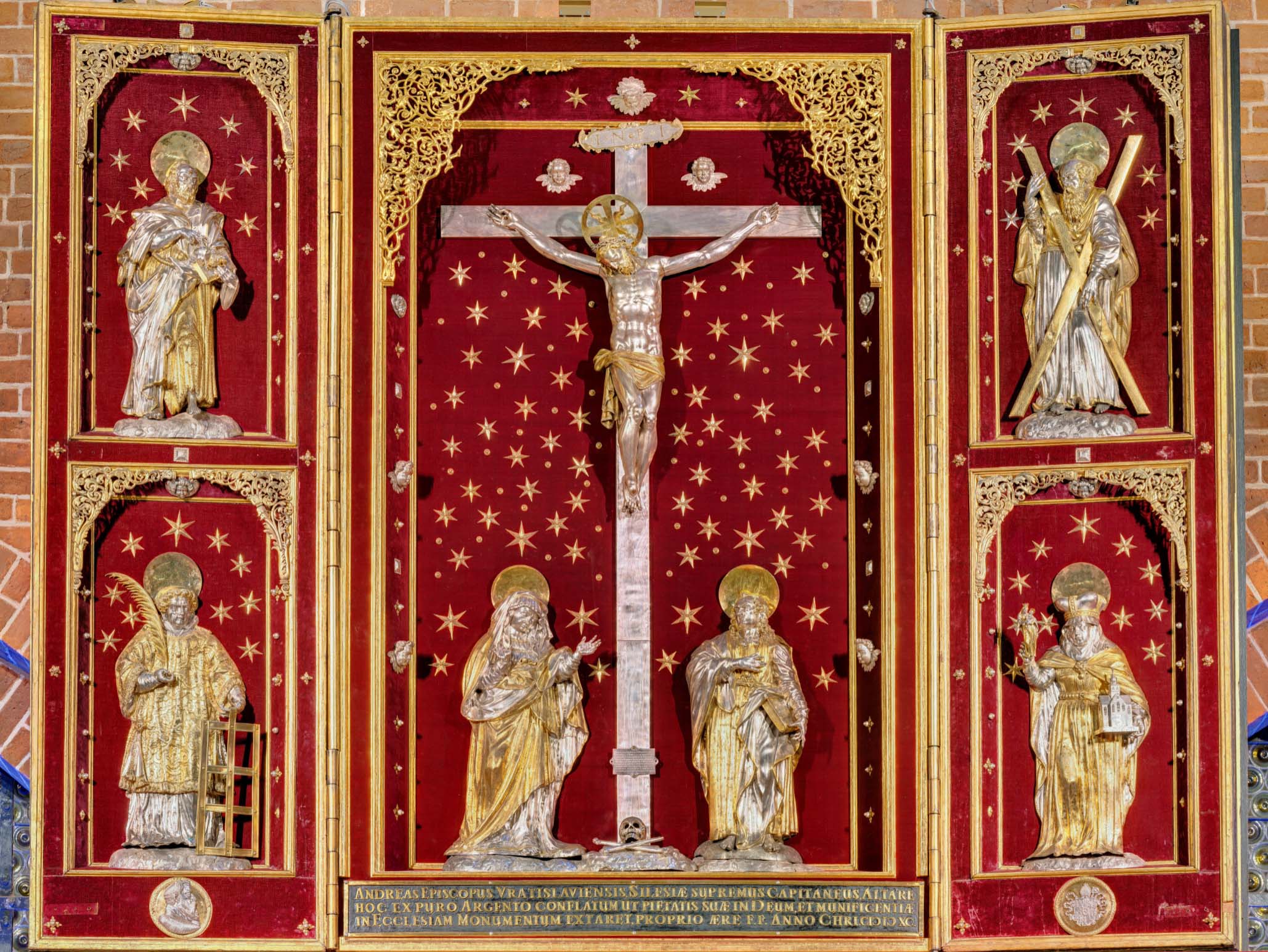Pieta
Pieta means, from Latin, pity or love in accordance with vocation. In arts and crafts, however, it symbolizes the image of the Mother of God holding the dead Son of God in her arms.
The most magnificent pieta is a sculpture made of marble by the brilliant Florentine, Michelangelo Buonarotti. It is housed in St. Peter’s Basilica at the Vatican. The Renaissance sculpture depicts Mary holding the dead Jesus Christ, apotheosizing the suffering of the soul over the suffering of the body, as well as loneliness. The Wroclaw Pietà is a faithful replica of the Vatican sculpture, made on a 1:1 scale.
The full-plastic, free-standing sculpture is set on a low oval pedestal. The scene shows Mary, seated on a bench block, holding the semi-recumbent, dead body of Jesus on her lap. Our Lady is dressed in a long-sleeved gown and a voluminous cloak imposed over it, reaching the figure’s feet. On her head is a headscarf, tightly covering her hair, falling over her neck and shoulders. Mary’s head is lowered, her gaze directed to the dead body of her Son, lying in her lap, supporting it with her right hand. The face of a woman with subtle, regular features. Her left hand, bent at the elbow is visited to the side. Christ’s head tilted back, twisted to the right side. The hands rest inert along the body. The right one is supported on Mary’s knee, the left one is placed on the hip. Traces of the crucifixion are limited to small wounds on Jesus’ hands, feet and side.
The structure of the work is pyramidal in shape, with Mary’s head at its apex. The sculpture expands gradually downward to the very base, on which the robe spreads.
3D models
)
)
)
)
)
)
)
)
)